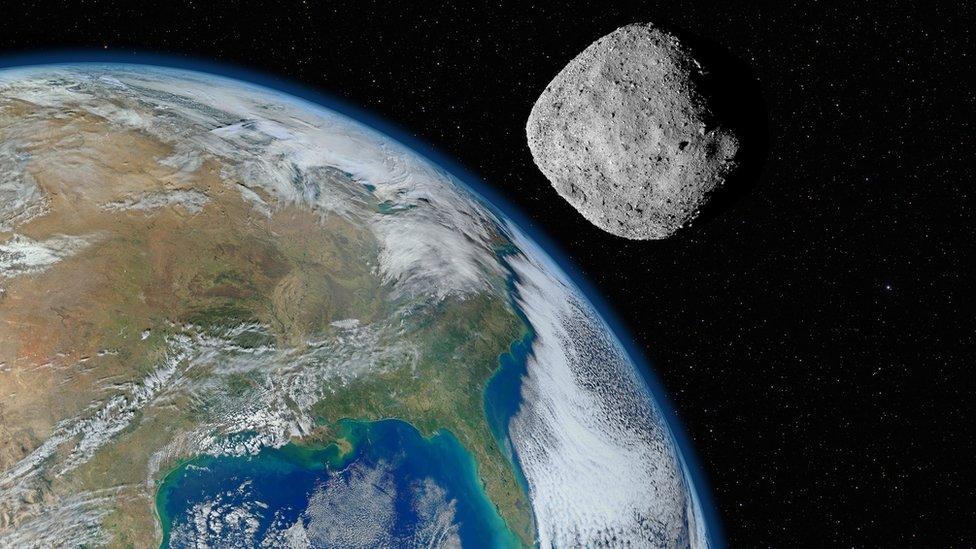Space: Scientists discover 'Trojan' asteroid following Earth's orbit
- Published
- comments
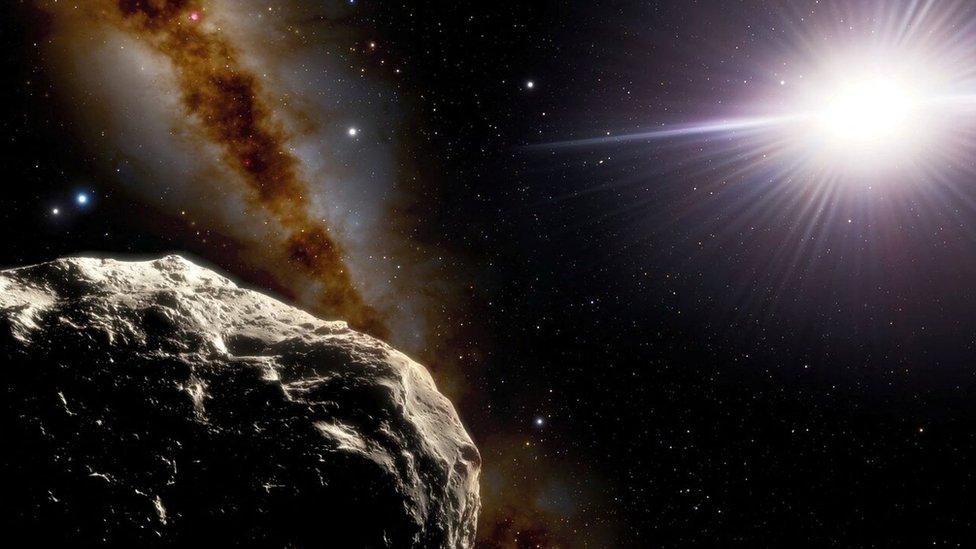
The asteroid 2020 XL5, an asteroid companion to Earth that orbits the sun along the same path as Earth
Earth is being followed... not by a rocket or an alien, but by an asteroid!
Scientists have confirmed the discovery of a "Trojan asteroid", this means an asteroid that shares the orbit of a planet, rather than orbiting the sun.
The asteroid - known as '2020 XL5' - is only the second such object that's ever been discovered.
What's more, scientists believe humans may one day be able to visit the rock, settling "human bases" there.
It was first spotted on 12 December 2020, but scientists had to wait before they could be certain it was an Earth Trojan, as they had to track where its orbit went.
After combining past data with observations conducted from Earth, researchers were able to confirm their suspicions that the object is actually an Earth Trojan.
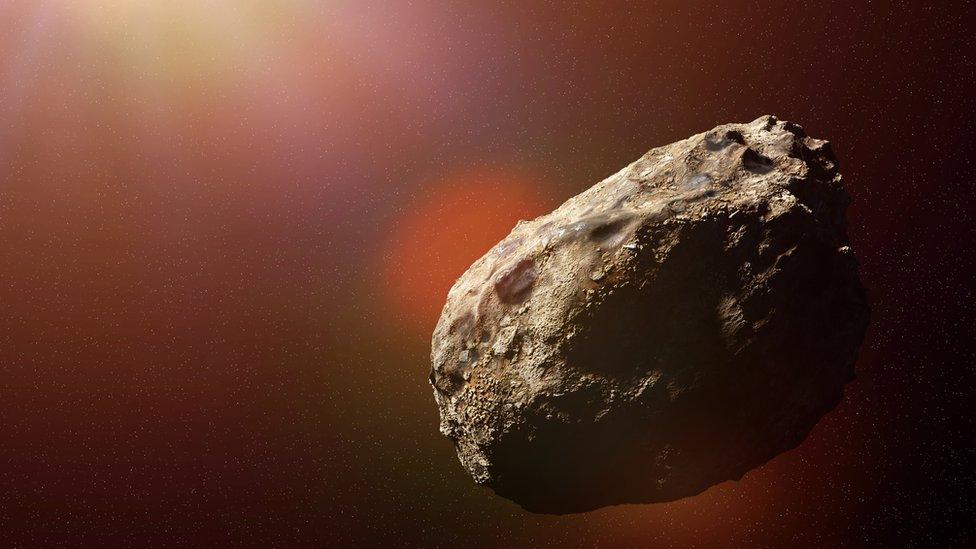
Trojan asteroids share their orbit with a planet. The small objects stay in a stable orbit just ahead of or behind the world that they are attached to.
They have been found a number of times in the past near other planets, but barely any have ever been spotted for Earth.
Only one, known as 2010 TK7, has ever been definitively found before. Researchers say this new discovery is much more promising.
This name was given as the asteroids were first found around Jupiter, where they are named after figures from the Trojan War.
Trojan asteroids are also known as minor planets.
Trojans are well known in the Solar System with Jupiter having the most - more than 11,000 documented.
Neptune meanwhile has 32, while Mars has nine, and Uranus has one.
The new asteroid is something called a C-complex type asteroid, made up mostly of carbon.
This type of asteroid is among the oldest objects in the Solar System, with a composition similar to that of the Sun itself.
This means C-type asteroids can help scientists learn about the early Solar System and the formation of the planets.
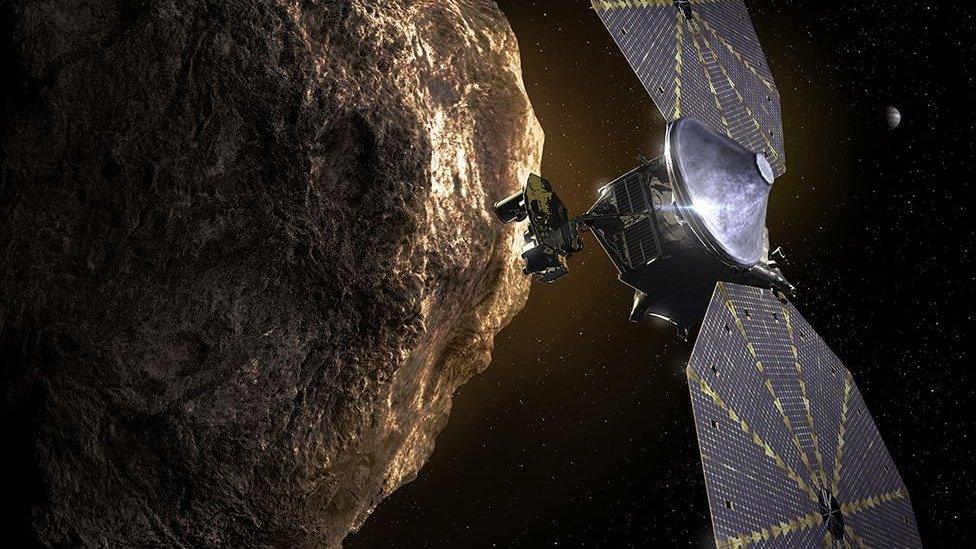
The Lucy probe set out last year to study the orbit of Jupiter which has the most Trojan asteroids of all!
The new asteroid is much bigger than the one previously found, and would need less fuel to reach it.
"Therefore these objects may become ideal targets for space missions and, in the more distant future, to settle human bases or install scientific hardware that would benefit from their peculiar location," the authors write.
And scientists will have plenty of time to study it, as the team think it will stay in its current orbit for another 4,000 years.
Astronomer Cesar Briceño of the National Science Foundation's NOIRLab said: "If we are able to discover more Earth Trojans, and if some of them can have orbits with lower inclinations, they might become cheaper to reach than our Moon.
"So they might become ideal bases for an advanced exploration of the Solar System, or they could even be a source of resources."
- Published15 September 2020
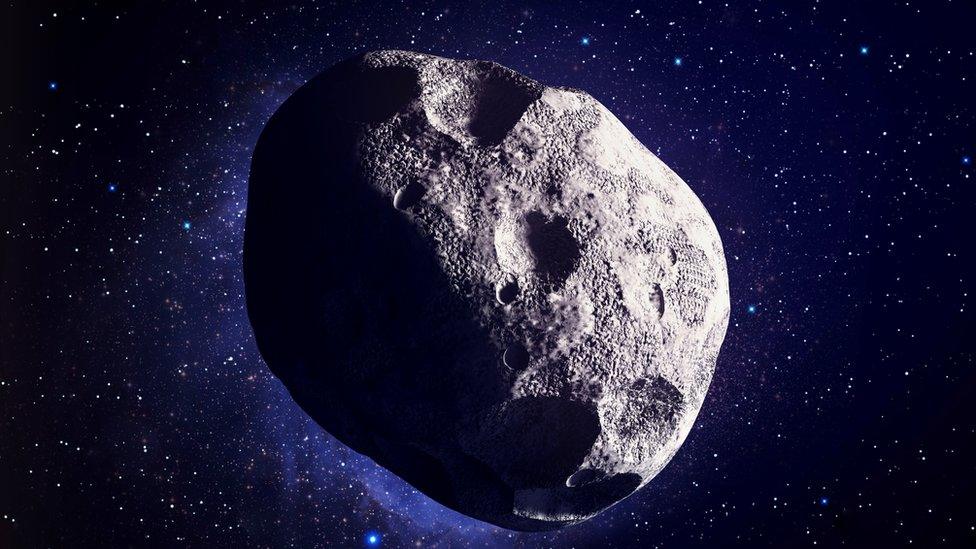
- Published21 August 2021
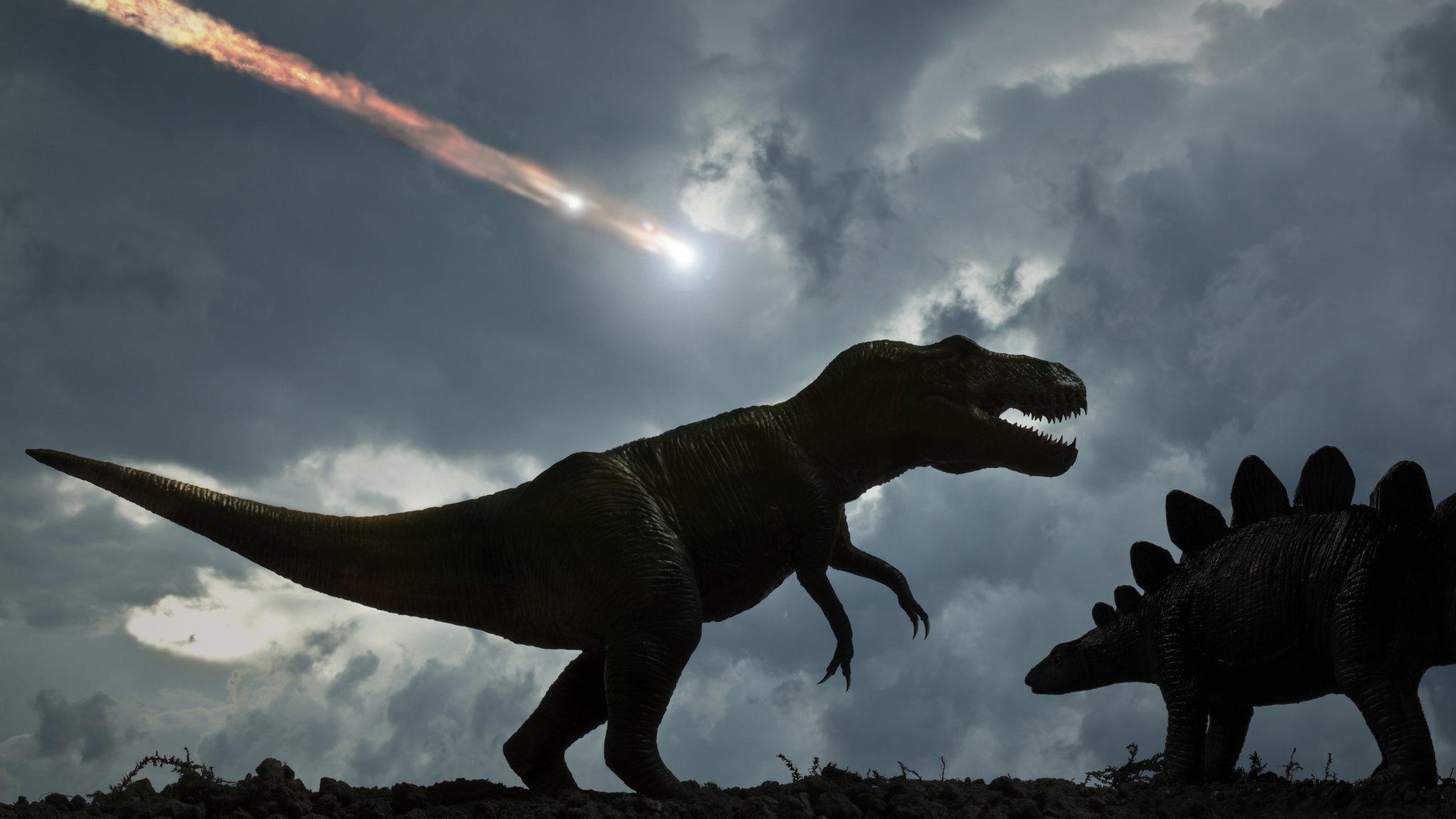
- Published18 January 2022
